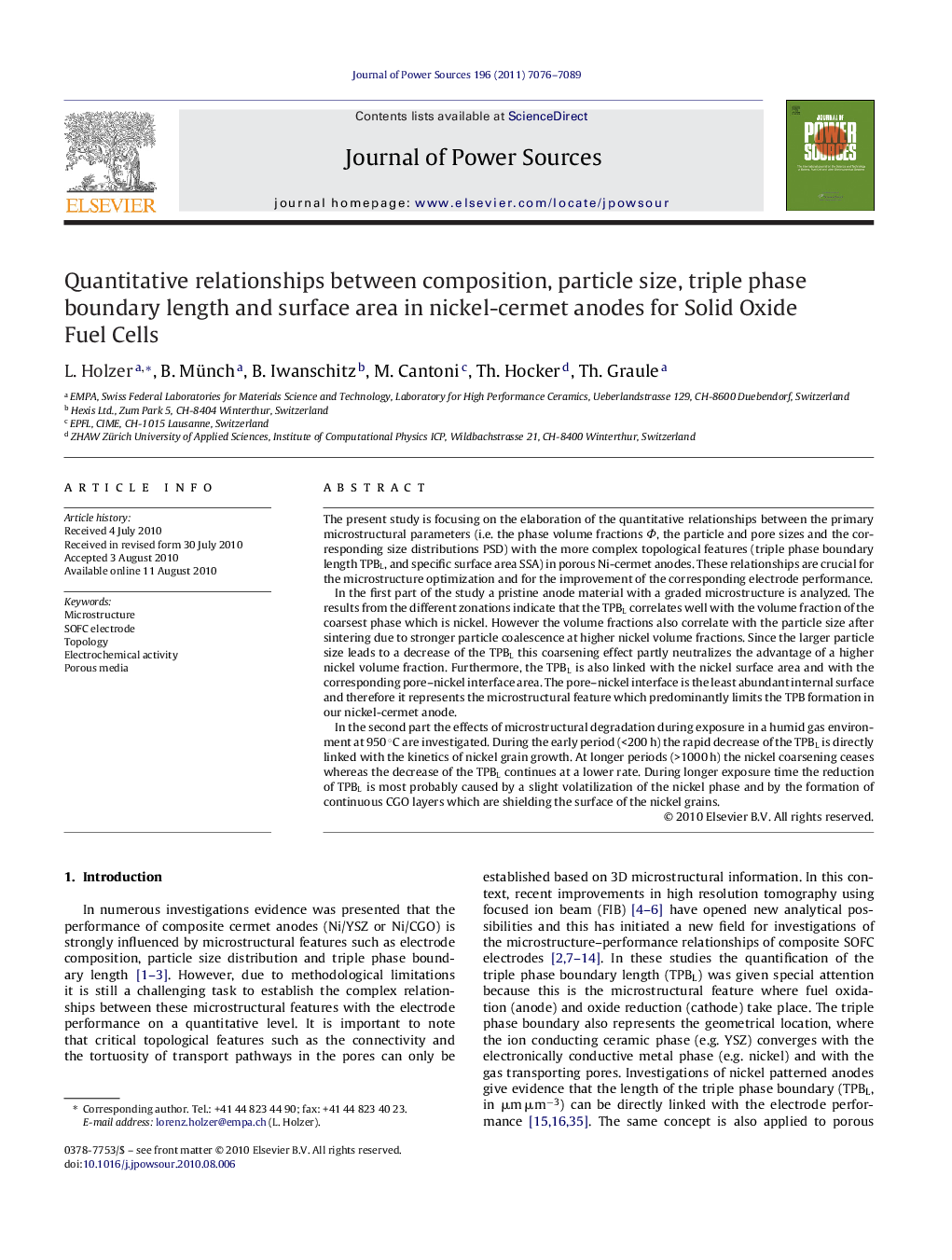| Article ID | Journal | Published Year | Pages | File Type |
|---|---|---|---|---|
| 1288487 | Journal of Power Sources | 2011 | 14 Pages |
The present study is focusing on the elaboration of the quantitative relationships between the primary microstructural parameters (i.e. the phase volume fractions Φ, the particle and pore sizes and the corresponding size distributions PSD) with the more complex topological features (triple phase boundary length TPBL, and specific surface area SSA) in porous Ni-cermet anodes. These relationships are crucial for the microstructure optimization and for the improvement of the corresponding electrode performance.In the first part of the study a pristine anode material with a graded microstructure is analyzed. The results from the different zonations indicate that the TPBL correlates well with the volume fraction of the coarsest phase which is nickel. However the volume fractions also correlate with the particle size after sintering due to stronger particle coalescence at higher nickel volume fractions. Since the larger particle size leads to a decrease of the TPBL this coarsening effect partly neutralizes the advantage of a higher nickel volume fraction. Furthermore, the TPBL is also linked with the nickel surface area and with the corresponding pore–nickel interface area. The pore–nickel interface is the least abundant internal surface and therefore it represents the microstructural feature which predominantly limits the TPB formation in our nickel-cermet anode.In the second part the effects of microstructural degradation during exposure in a humid gas environment at 950 °C are investigated. During the early period (<200 h) the rapid decrease of the TPBL is directly linked with the kinetics of nickel grain growth. At longer periods (>1000 h) the nickel coarsening ceases whereas the decrease of the TPBL continues at a lower rate. During longer exposure time the reduction of TPBL is most probably caused by a slight volatilization of the nickel phase and by the formation of continuous CGO layers which are shielding the surface of the nickel grains.
